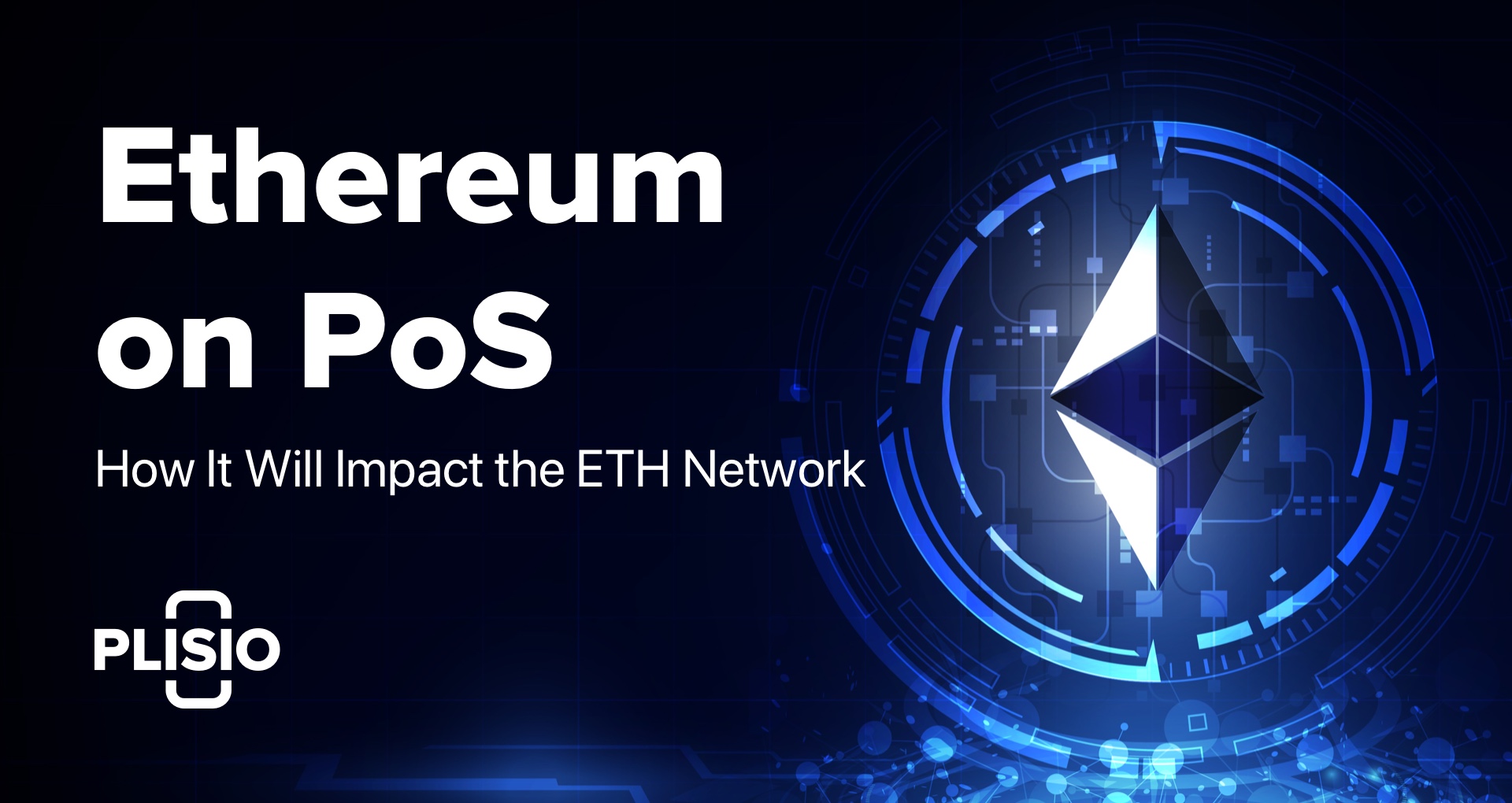Ethereum on PoS: How “Merge” Will Impact the ETH Network

Ethereum, the first blockchain to introduce Smart contracts, launched its network in 2015. Created by Vitalik Buterin and Gavin Wood, Ethereum’s main mission was to provide an alternative to the main cryptocurrency at that time - Bitcoin. The ETH network edge was the decentralized finance protocols, NFT marketplaces, GameFi systems and so on.
As it was announced recently, the Ethereum blockchain is about to adopt new technical updates, namely switching from Proof-or-Work consensus to Proof-of Stake, which is called the Merge.
How does Proof-of-Stake work?
Proof-of-Stake is the blockchain consensus algorithm in which it is validators who choose a new block before it is added to the chain. If we compare it to the Proof-of-Work consensus mechanism, it is more energy efficient, eco-friendly and better decentralization wise: you can join the network staking without having to buy mining equipment. Validators only need to “stake” their crypto assets on a given chain to support the protocol integrity. The more coins validators stake, the more important they’re when the next block is chosen to validate a transaction. For locking up their digital assets, they receive the staking reward which size is determined by the amount of crypto they’ve staked.
Generally, switching to PoS is considered a major improvement for the Ethereum network and is meant to address its main competitors, which are Cardano (ADA) and Polkadot (DOT).
What is Merge?
As stated above, Merge is the crypto community slang for transitioning ETH from Proof-of-Work consensus mechanism to Proof-of-Stake.
The switch will greatly improve security, sustainability and scalability of the ETH network, as well as will take care of the energy-concentrated mining process. Let’s dive into the technical side a little bit.
Such cryptocurrency like Bitcoin uses PoW mechanism where computers need tons of power to sustain the network for it to be able to validate transactions. The principle of reward distribution among miners depends on how much computing power they produced for minting new coins. Many protestors of PoW principle claim that such networks leave a significant carbon footprint as the miners compete for the mining rewards and therefore use too much electricity.
In PoS, validators use their own computing power for staking which is opposed to transferring raw computing power to mine new ETH, so it will be more economically motivated to upgrade the network operation and cut the energy consumption. This is one of the reasons Ethereum needs the Merge.
Ethereum blockchain also supports the ERC-20 coin standard, which is definitely worth investing in. The easiest way for your e-commerce to get started is to accept payments in crypto and accumulate your revenue. The Plisio platform has all the cryptocurrency payment integrations you might need, zero code knowledge required. They have all the possible ecommerce plugins, a wide range of crypto to choose from and responsive support team, all of that with the lowest fees on the market.
Merge’s impact on the ETH ecosystem
In 2022, the Ethereum PoW network will merge with the Beacon chain, switching ETH to the whole new blockchain. This will have a considerable impact in terms of technology and politics.
First of all, it will free validators form the difficulty bomb which is getting worse every day as the mining complicity increases, making mining new coins almost impossible. To avoid the block in the ETH network development, miners are encouraged to transfer to the PoS consensus mechanism.
From the technical perspective, we see how the popularity of Web 3.0 increases - Decentralized Finance projects and NFTs gain more and more traction and attract major investments. The demand for decentralized and distributed computing power breeds the need for optimized and sustainable Ethereum blockchain on PoS.
Under PoS, Ethereum will address many challenges presented in PoW, making the network more scalable and therefore more attractive for Web3. PoS will shard the network into pieces to increase the transaction output and reduce gas fees.
The main advantage of Ethereum 2.0 is that there will be more opportunities for native network users and long-term investors to develop new business models without advanced tech equipment.
Bottom Line
Ethereum network is the second largest blockchain and the largest smart contract network that will switch from PoW consensus mechanism to PoS principle in September 2022, opening up new opportunities and enhancing the network scalability, security and sustainability. Replacing mining with staking is the result of 3 years R&D efforts to change the ETH network forever and make it more decentralized.
Ethereum is by no means a less powerful network - the coin is great to invest or accept payments in. The Plisio cryptocurrency payment gateway has an Ethereum payment feature that can be easily integrated for your e-commerce. You will not only find there a lot of ERC-20 coins to choose from, but also plenty of business and bookkeeping tools that can easily help you grow your business. It is a nice opportunity for you to get ready for Ethereum 2.0 and practice on the original Smart contract blockchain.
